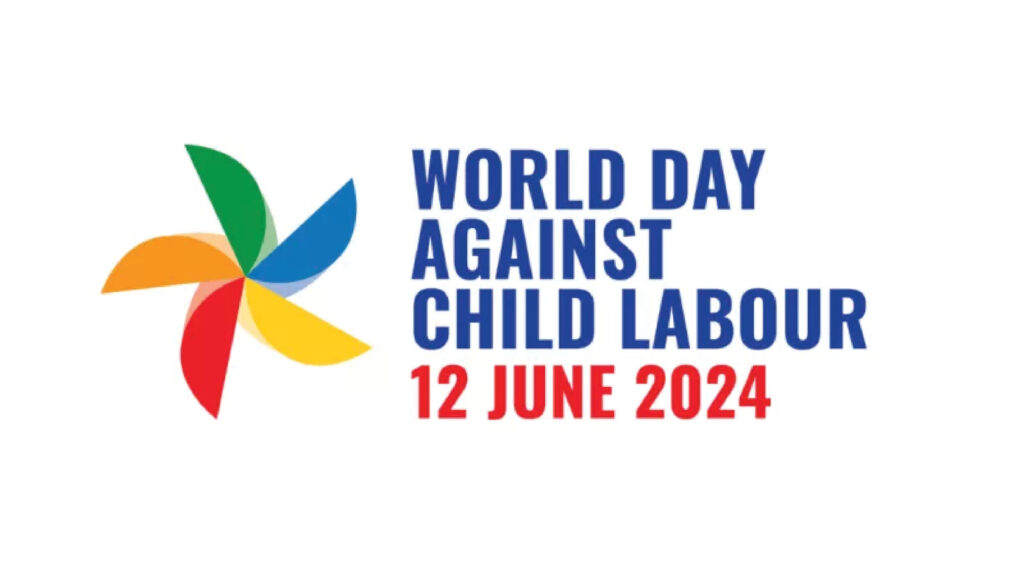This year’s World Day will focus on celebrating the 25th anniversary of the adoption of the Worst Forms of Child Labour Convention (1999, No. 182). It also presents an opportunity to remind all stakeholders to improve their implementation of the two fundamental Conventions on child labour – Convention No. 182 and Convention No. 138 concerning the Minimum Age for Admission to Employment or Work (1973).

Although significant strides have been taken in reducing child labour over time, recent years have seen global trends reverse, underscoring the pressing need to unite efforts in expediting actions to eradicate child labour in all its manifestations.

With the adoption of Sustainable Development Goal Target 8.7, the international community made a commitment to the elimination of child labour in all its forms by 2025.
Now is the time to make the elimination of child labour a reality!

This World Day Against Child Labour, June 12, 2024, we are calling for:
• The effective implementation of the ILO Convention No. 182 on the Worst Forms of Child Labour;
• Reinvigorated national, regional and international action to end child labour in all of its forms, including worst forms, through adopting national policies and addressing root causes as called upon in the 2022 Durban Call to Action;
• Universal ratification and effective implementation of ILO Convention No. 138 on the Minimum Age, which, together with the universal ratification of ILO Convention No. 182 on the Worst Forms of Child Labour achieved in 2020, would provide all children with legal protection against all forms of child labour.

Prevalence of child labour
Since 2000, for nearly two decades, the world had been making steady progress in reducing child labour. But over the past few years, conflicts, crises and the COVID-19 pandemic, have plunged more families into poverty – and forced millions more children into child labour. Economic growth has not been sufficient, nor inclusive enough, to relieve the pressure that too many families and communities feel and that makes them resort to child labour. Today, 160 million children are still engaged in child labour. That is almost one in ten children worldwide.
Africa ranks highest among regions both in the percentage of children in child labour — one-fifth — and the absolute number of children in child labour — 72 million. Asia and the Pacific ranks second highest in both these measures — 7% of all children and 62 million in absolute terms are in child labour in this region.
The Africa and the Asia and the Pacific regions together account for almost nine out of every ten children in child labour worldwide. The remaining child labour population is divided among the Americas (11 million), Europe and Central Asia (6 million), and the Arab States (1 million). In terms of incidence, 5% of children are in child labour in the Americas, 4% in Europe and Central Asia, and 3% in the Arab States.
While the percentage of children in child labour is highest in low-income countries, their numbers are actually greater in middle-income countries. 9% all children in lower-middle-income countries, and 7% of all children in upper-middle-income countries, are in child labour. Statistics on the absolute number of children in child labour in each national income grouping indicate that 84 million children in child labour, accounting for 56% of all those in child labour, actually live in middle-income countries, and an additional 2 million live in high-income countries.
There are 160 million of children in child labour
Not all work performed by children is child labour. International standards define child labour as work that is hazardous to a child’s health and development, demands too many hours and/or is performed by children who are too young.
Usually, child labour interferes with a child’s right to education and to play. This issue is at the core of the ILO mission.























